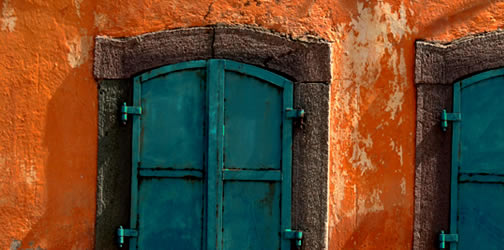Evolution Of The Film
Introduction
Nandini and I met at Oxygen Media in New York City in 2000. We were both producers for a groundbreaking show on women’s sports called “Oxygen Sports.” As a relative novice in the world of media, I was in awe of Nandini’s production style and previous work. She has an incredible eye and a real gift for telling stories visually, while I was mostly all-literal-all-the-time.
Several years prior to our meeting I had met another extraordinary woman: Juthica Stangl, president and founder of The Shadhika Foundation, a wonderful, “zero overhead” organization that funds humanitarian aid projects that focus on women and children in India. The very first time I met Juthica she told me about Shadhika, and even though it would be almost ten years after that that I would become a filmmaker, we made a deal that one day I would produce a film about one of her projects.
Back at Oxygen, after only knowing her for a few weeks, I told Nandini about Shadhika and my plans to make a film. As I described the project, I saw her eyes fix as she hung on every word. I finished up by asking her if she would produce the film with me. It occurred to me that no matter how talented I was or would become, I would likely never have the sensitivity and deep cultural experience necessary to make a film worthy of the work that Shadhika was doing. So, seeing Nandini’s work and getting along with her as well as I did, I thought: “This is who I should make this film with.”
Cut to: 2006. Nandini and I have gone our separate ways post-Oxygen, but stayed in touch. One day I get an email from Juthica basically saying: “I’m going to India in January 2007. This is it. Are you in or not?” I was. And that was the beginning of what has become, for me, a deep connection to Kolkata and Indian culture.
Immediately, I emailed Nandini. Could she join me? Nope. Pregnant. Oh dear… Okay, well I’ll just do the best I can. We talked about what I could shoot even before we knew which story we were going to tell. The thing about filming in India is that every day is a chance for great b roll, so the thinking is, if you’re lucky enough to be there, keep your camera rolling. On that Jan. 2007 trip with Juthica, I shot much of the footage that would be used in “Soma Girls,” particularly the cornerstone interview with Urmi Basu, the social worker who had created Soma Home under the auspices of her larger NGO, New Light.
It wasn’t until Jan/Feb 2008 that Nandini was able to return to Kolkata. It was on that trip that we settled on Soma Home as the focus for our film. When we first arrived in Kolkata I took Nandini to see each of the wonderful projects Shadhika was funding at the time. When we arrived at Soma Home for the first time, we heard music as we climbed out of our car. Going inside the house, we heard the music get louder and louder as we ascended to the second floor common area. There we were met by the image we hope our film will leave you with: a dozen happy, funny girls dancing energetically together and laughing and laughing and laughing and laughing.
Production
Early in our discussions about format and “look,” Nandini and I had decided to go with my Panasonic DVX100B for the interviews and some broll, but then also to employ my Sony TRV900–a workhorse of a little prosumer camera–as it provides a saturation I haven’t been able to find in other, newer digital video cameras. The TRV900 is also small and unassuming, so if there were crowd shots that we needed, it was less obtrusive. Lastly, we used a lot of the stuff I’d shot on a trip to Kolkata in 2007 when I used a Sony FX1 (HDV). Urmi’s main interview was shot on this as well as some of the Kalighat broll. All told the three cameras match well and each have a sweet color temperature that helps translate the beauty of India.
On both filming trips I took the cameras in a LowePro backpack, which I highly recommend for any work in urban India. The MiniTrekker backpack is light and rugged and has easy, quick access when you need it. I also brought an external Lacie hard drive on both trips in order to digitize tapes at night. I’m paranoid about having only one copy of footage, so I always digitize before getting back on a plane, even though I carry the master tapes with me…
Post Production
I edited on Final Cut Pro 6 on a 17″ MacBook Pro in my house and Nandini’s house. We edited the bulk of the film together in four 3-day meetings we had in Nandini’s apartment in New York. The portability of the system allowed us to do this with no headache whatsoever. We both found that this way of working–with a kind of forced, military-esque urgency–sharpened our visions and really made us focus on what was necessary at every stage. When I went home after these sessions it was to make audio tweaks and add a bit of broll.
One of the most valuable pieces of our post-production was the feedback we got. I can’t stress enough how important feedback is. You don’t have to belabor it, but because we had these one-shot, short editing weekends we came up with new stuff/new scenes all the time and wanted to make sure they worked. So we did a lot of what I came to call “Feedback Police.” Suffice it to say that we have the smartest, most eagle-eyed, sensitive, and expressive Feedback Police anyone could have. They truly helped to shape the film into what we’d wanted when we first saw Soma Home in 2008.
